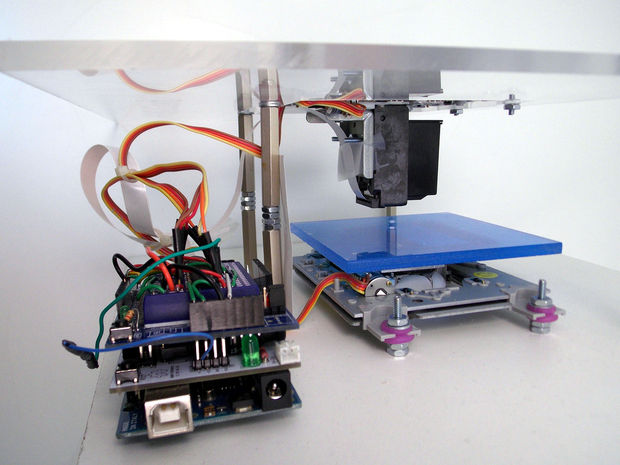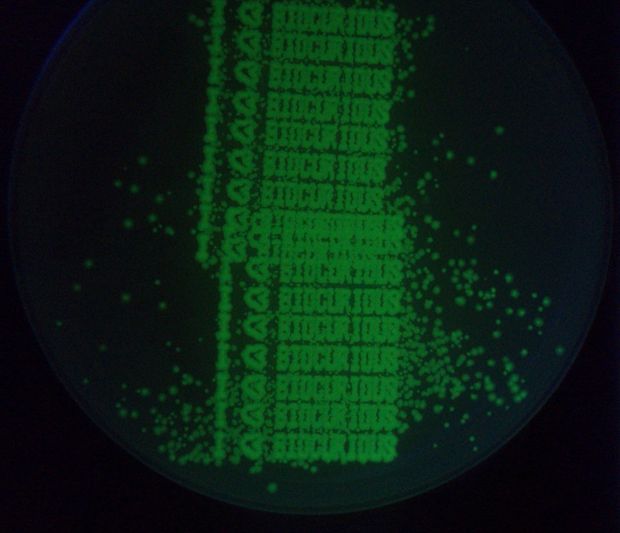A DIY Bioprinter Is Born
Three-dimensional printers have been used to print iPhone cases, gun parts, even chocolate candies. Now a group of biohackers that meets at BioCurious, a community biology laboratory in Sunnyvale, California, has created a do-it-yourself inkjet printer that can print living cells.

Not everyone is comfortable with the idea of the biohacker movement (see “Doing Biotech in My Bedroom”), whose aim is to tweak everyday technologies and make it affordable and easy for anyone to manipulate DNA, cells, and other of life’s building blocks. The far-fetched possibilities ring too close to bad science fiction. Other skeptics think these bio-tinkerers won’t produce much more than elaborate science fair projects.
And it’s true, the new DIY bioprinter isn’t a fundamental breakthrough—well-funded academic and corporate research labs already work with more sophisticated 3-D printing equipment to layer cells and build artificial tissue structures as they try to engineer entire organs and replacement human parts.
But after a conversation with Patrik D’haeseleer, a bioinformatics researcher at Lawrence Livermore National Laboratory who moonlighted as organizer of the DIY bio-printer project at BioCurious, I saw why it’s important to encourage more people to play around with biology. These hobbyists could one day make important contributions to the biotech field. Apple and Microsoft were born in garages, too.
This DIY bio-printer took some trial-and-error to create. After dismantling an HP 5150 inkjet printer and later deciding to instead build an inkjet platform from scratch, D’haeseleer and other volunteers successfully put together the bio-printer for about $150. Their first model only works in two dimensions—to demonstrate, they printed a sheet of fluorescent E. Coli cells to read “I ♥ BioCurious” over and over again (see video demo).
So what’s it good for? D’haeseleer’s idea is to use the printer to print plant cells and build photosynthetic structures, although this is a long-term project that will be much harder than squirting E. Coli on a sheet. He imagines applications could include creating energy-producing surfaces on everyday objects. But really, D’haeseleer, mostly wants to print a leaf to see if he can do it.
To me it means that even if today’s biotinkerers don’t create the next Microsoft or Apple, they might just spark the curiosity of someone else who will. The BioCurious group has posted a detailed how-to guide to make the bio-printer on the website Instructables.

Keep Reading
Most Popular
Large language models can do jaw-dropping things. But nobody knows exactly why.
And that's a problem. Figuring it out is one of the biggest scientific puzzles of our time and a crucial step towards controlling more powerful future models.
The problem with plug-in hybrids? Their drivers.
Plug-in hybrids are often sold as a transition to EVs, but new data from Europe shows we’re still underestimating the emissions they produce.
How scientists traced a mysterious covid case back to six toilets
When wastewater surveillance turns into a hunt for a single infected individual, the ethics get tricky.
Google DeepMind’s new generative model makes Super Mario–like games from scratch
Genie learns how to control games by watching hours and hours of video. It could help train next-gen robots too.
Stay connected
Get the latest updates from
MIT Technology Review
Discover special offers, top stories, upcoming events, and more.